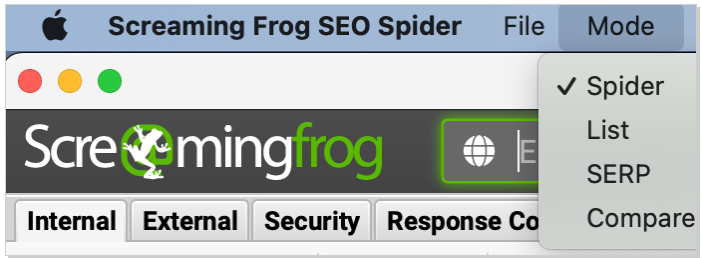So imagine you’re an explorer tasked with navigating a vast, uncharted island brimming with treasures. Without a detailed map, finding the riches would be nearly impossible, right?
For SEO professionals or business owners wanting to grow their rankings on SERPs organically, that map is Screaming Frog, a game-changing tool designed to uncover hidden opportunities, fix technical glitches, and enhance your organic rankings.
Whether you’re an SEO pro trying to deliver client results or a business owner aiming to optimize your website, Screaming Frog isn’t just another tool—it’s your ultimate companion in the quest for SEO excellence.
At Mavlers, we have 12+ years of experience catering to the SEO needs of 7K+ global clients and have helped them witness a $196K+ increase in organic revenue. Our expertise with a range of SEO tools and platforms will help you choose the right fit for your unique organic growth needs.
Table of contents
- Understanding the basics of the tool
- Top 9 distinctive Screaming Frog features you should know
In this blog, our in-house SEO expert, Namrata Kumari, unveils the top 9 Screaming Frog features every SEOite should know and shows you how to turn its data-driven insights into actionable strategies for organic success.
What is Screaming Frog?
Before diving into its standout features, let’s start with the basics of this powerful tool.
Screaming Frog is like your go-to SEO sidekick—a desktop program that scans websites and gathers essential data to help you fine-tune your SEO strategy. Whether it’s spotting problems, uncovering growth opportunities, or simplifying technical tweaks, this tool does the heavy lifting to make your optimization efforts smoother and smarter.
Here’s why It’s a must-have tool for SEO professionals:
- Cross-platform: It works seamlessly on both Windows and Mac.
- Free vs. paid versions:
- Free: Crawl up to 500 URLs—perfect for small sites or initial audits.
- Paid: Unlock unlimited crawling and access premium features ideal for large-scale operations.
- Beyond SEO: This is not limited to optimization; it can also be used for competitor analysis, website audits, and technical troubleshooting.
Whether you’re tackling a small business site or a sprawling enterprise website, Screaming Frog equips you with the data you need to stay ahead of the competition.
Top 9 distinctive Screaming Frog features you should know
Let’s hit the ground running and delve into the unmissable, unique features of the tool.
1. Crawl large sites deploying database storage instead of RAM storage
So, by default, the tool makes use of your machine’s RAM to store the crawl data. Though this process is quite fast, it might not be the ideal one as your RAM might not have the capacity to store that amount of data.
You can switch this up by turning to database storage. Also, if your machine is equipped with an SSD (Solid State Drive), it can be as fast.
Here’s how you can do that;
- Go to Configuration > System > Storage.
- Switch from RAM Storage to Database Storage.
You can now enjoy uninterrupted crawling, no matter the site size!
2. Advanced insights with API integrations
Why stop at basic crawling when you can supercharge your audits by integrating Screaming Frog with tools like Google Analytics 4 (GA4), Google Search Console (GSC), and Page Speed Insights?
Here’s what you stand to gain:
- GA4 Integration: To see the full picture, pair technical data with user behavior insights, such as session duration and bounce rates.
- GSC Integration: Identify underperforming pages and keywords, allowing you to refine your content and improve rankings.
- Page Speed Insights: Fetch Core Web Vitals metrics like LCP, FID, and CLS to ensure your pages meet Google’s performance standards.
Need an insider pro tip?! Jot this down!
Set up API access via Configuration > API Access. Integrating these tools transforms Screaming Frog into an all-in-one SEO powerhouse, saving you time and effort.
3. Top 3 Screaming Frog modes every SEO should master
Screaming Frog offers multiple crawl modes that cater to specific use cases. Let’s explore the most impactful ones:

a) List mode
Need to analyze a specific set of URLs? List Mode lets you upload a curated list for targeted crawling.
Ideal for audits of product pages, blog posts, or tracking redirected URLs.

Use it via Mode > List and upload a text or CSV file containing the URLs.

b) SERP mode
Want to dive into search engine results pages? SERP Mode lets you analyze meta tags, titles, and descriptions directly from the SERPs.
It is the perfect mode for identifying trends in competitor metadata and crafting click-worthy titles for your own site.

c) Compare mode
When running A/B tests or transitioning from a staging site to production, the Compare Mode helps identify differences between two crawls.
It helps you easily pinpoint broken links, missing redirects, or meta tag discrepancies.
You can access it via Mode > Compare for side-by-side comparisons.
4. Configuration feature: Include or exclude URLs
Not all pages are created equal, and sometimes, you’ll want to focus your crawl on specific sections of a website. Screaming Frog’s Include and Exclude features let you do just that.
Here’s an insight into how the feature works:
- Include URLs: Use regex patterns to define pages you want to crawl.

- Exclude URLs: Specify sections to skip, like staging URLs or irrelevant subdomains.

- You can tailor your crawl by navigating to Configuration > Include/Exclude.
This is a must-have feature for eCommerce SEO, allowing you to zero in on category or product pages while skipping filters and search query pages.
5. The power of custom features
Screaming Frog’s custom settings elevate your audits to a new level by providing unmatched flexibility:
a) Custom search
You can find and flag specific phrases or patterns, such as “out of stock” messages or placeholder text, using this feature.
You can activate it under Configuration > Custom > Search.
b) Custom extraction
Use it to scrape critical data like schema markup, Open Graph tags, or specific HTML elements.
You can configure it via Custom > Extraction, using XPath or CSS selectors.
c) Custom link positions
This feature can be used to determine where links appear on your pages—header, footer, or body—and optimize their placement for better SEO value.
6. XML sitemap creation and audit
XML sitemaps are essential for search engines to crawl your site efficiently. Screaming Frog simplifies both creating and auditing sitemaps.
Here’s what you can do:
- Build sitemaps: Generate XML sitemaps with just a few clicks.
- Audit existing sitemaps: Identify errors, such as orphaned pages or broken links.
You can find this feature under Sitemap > XML sitemap, and let Screaming Frog handle the heavy lifting.

7. Maximizing insights with Crawl Analysis
Screaming Frog’s Crawl Analysis feature lets you dig deeper into your website’s technical health.
Here are some of its key benefits:
- Use it to identify duplicate content, redirect chains, and missing meta tags.
- It can also be used to spot inconsistencies in internal linking or broken anchor links.
You can activate Crawl Analysis via Crawl Analysis > Start, and get detailed reports you can act on immediately.
When Screaming Frog crawls a website, it shows most of the data in real-time, like metrics, tabs, and filters, as it goes through the site. However, some things, like the ‘Link Score’ and a few specific filters, need extra processing after the crawl is finished or stopped.
You can see the full list of items that need this extra analysis by going to ‘Config > Crawl Analysis.’
To make this process easier, you can choose to automatically run the analysis at the end of a crawl by checking the ‘Auto Analyze At End of Crawl’ box under the settings menu. If you prefer, you can also run it manually by clicking ‘Crawl Analysis > Start’ in the main menu.

8. Content analysis for better optimization
Your website’s content is its voice, and Screaming Frog ensures that voice is clear and consistent.
Here are some of its top features:
- It can highlight missing or duplicate metadata.
- It can also flag thin content that lacks depth or keyword relevance.
Audit images for alt text and file size issues to improve accessibility and speed.
9. Website architecture analysis
Understanding how users and search engines navigate your site is crucial for SEO success. Screaming Frog’s architecture tools help you visualize your site structure.
Here’s what you stand to gain insights on:
- Depth analysis: See how many clicks each page is from the homepage.
- Internal linking: Identify pages with poor or excessive internal links.
- Orphan pages: Detect pages that aren’t linked from anywhere else.
You can use the Directory Tree Visualization for a clear overview of your site’s architecture.

The road ahead
By mastering these nine features of the tool, you’ll not only streamline your workflow but also uncover opportunities that give your website the competitive edge it needs to rank higher organically.
We now suggest reading ~ From Chaos to Clusters: Transform Your SEO with Keyword Clustering Strategies.


Namrata Kumari - Subject matter expert (SME)
With over 7 years of experience in the ever-evolving world of SEO, she specializes in team management, project coordination, and client communication. Her expertise spans core SEO strategies, including On-page, Off-page, Technical SEO, and Local SEO, while leveraging advanced tools such as Google Analytics, Google Search Console, ChatGPT API AI for Sheets and Docs, Screaming Frog, SEMrush, Ahrefs, and Moz Pro. She is passionate about staying ahead of SEO trends and technologies, always striving for professional growth and innovation.
Ishan Maniar - Subject Matter Expert (SME)
Ishan is an Assistant Team Lead at Mavlers, bringing over 11 years of extensive experience in SEO. He is a recognized expert in B2B, B2C, E-commerce, and Local SEO. Ishan is dedicated to driving revenue growth through insightful, data-driven SEO strategies. Recognized as a subject matter expert, he excels in team management, client satisfaction, and transparent communication, ensuring the success of every campaign. He is passionate about exploring new trends and innovations in the digital landscape, striving to deliver exceptional results and exceed client expectations.
Naina Sandhir - Content Writer
A content writer at Mavlers, Naina pens quirky, inimitable, and damn relatable content after an in-depth and critical dissection of the topic in question. When not hiking across the Himalayas, she can be found buried in a book with spectacles dangling off her nose!
How to Boost Email Deliverability for the Holiday Season – Tips from A Mavlers Expert
Master Your WordPress Workflow: The Smart Developer’s Guide to Integrating with GitHub